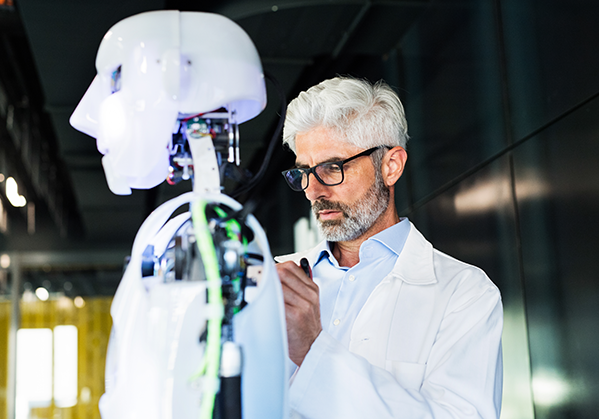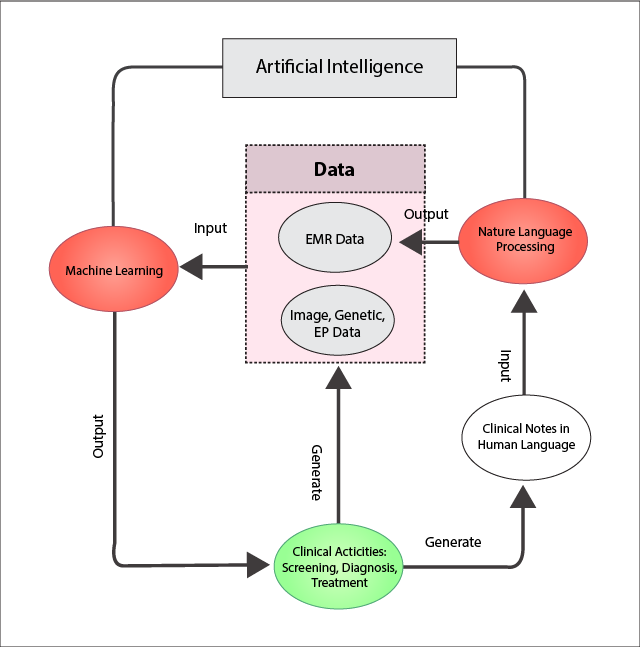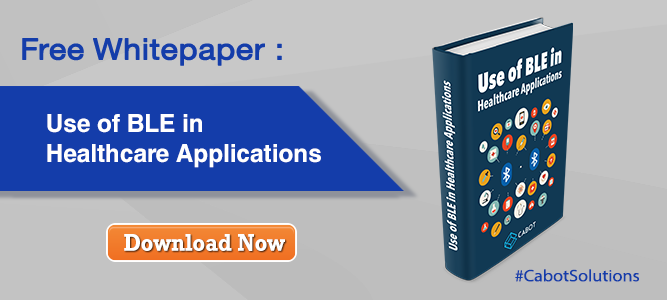Latest news about Bitcoin and all cryptocurrencies. Your daily crypto news habit.

The milestones covered by Artificial Intelligence, or AI as it is fondly known, has brought the world on its toes. The level of acceleration of growth in various industries has been pretty quick and sometimes, totally unpredictable. So, what is AI?
AI is a collection of multiple technologies that mimic human’s cognitive functions. Apart from all the industries it has been touching, you can say that the modern healthcare industry has been receiving paramount importance. There has been a paradigm shift in the way patients are treated by doctors because they now have inordinate amounts of data in their hands, and a good amount of this data can be put to good use.
It is possible to apply AI to both structured and unstructured data, with techniques including machine learning and natural language processing. The technology is widely used in all kinds of health related aspects, but it is also important to note that the largest concentrated usage is cardiology, neurology and oncology. Nurses and doctors have started adopting the technology to reduce manual work, and to provide more accurate service and impactful interventions to patients.
With the volume of data going up at a staggering rate, traditional analytic methods have been revamped and there has been a change in the clinical decision making techniques. This allows the decision makers to gain unprecedented insights while making a diagnosis, planning the care process, treatment variability and finally, patient outcomes.
The usage of computers is definitely not new by any means, but the amalgamation of the human mind and technology without the usage of monitors or keyboards or other paraphernalia has led to significant changes in the medical industry, and this doesn’t include just medical care, but automating administrative tasks as well.
The promise of AI in the matters of health, including that of life and death critical issues is highly impressive.
How AI is Changing Healthcare
AI is easily the game changer in the healthcare industry. It supports human physicians, and the doctors’ roles are also changing. According to reports by Frost & Sullivan, the consulting firm, the healthcare AI market is likely to experience a compound annual growth rate of 40% by 2021, and it has the potential to change healthcare outcomes by 30–40% and cut treatment costs in half.
An analysis by Accenture says that key AI applications in healthcare can create $150 billion dollars in annual savings for the US healthcare economy by 2026.
The expertise of trained clinicians can now be augmented in full by the additional layer of Artificial Intelligence as it adds an extra layer through which it is possible to cut down errors in the field of health care.
1. Electronic Health Records
Electronic Health Records or EHR brought out strategic changes in healthcare, but it was not a smooth transition because problems like cognitive overload, user burnout and endless documentation caused certain limitations. But enter Artificial Intelligence, and you can actually automate these routine processes and make the interfaces more intuitive.
Clinical documentation is an area that takes up so much time but with the possibility of voice recognition and dictation, combined with natural language processing, a lot of time and effort can be saved. This is a major boon for doctors because information retrieval is a strong aspect in AI. And there is an even intuitive UI to make it easier for storing information.
There is also a major change in the way patients are treated. Doctors no longer need to worry about drug overdose or wrong combinations or allergies because this information will all be saved in the cloud, to be relied on and acted upon at the right time.
Patients with history of various infections can also benefit from the technology because it is now easier to identify the patterns and send notifications.
Apart from information storage and retrieval, and identification of patterns, AI can handle routine requests as well. Here are some scenarios:
- Suppose a patient has an overdue lab test, it would send notifications to the concerned patient.
- A patient is about to run out of his medication. With AI, the request for medicine refill will be sent promptly.
- Identify which patient out of many needs immediate care and prioritize them accordingly.
2. Medical Imaging Diagnostics
Artificial Intelligence plays a major role in enabling intelligence in the radiology images obtained through scanning machines. X-rays, CT, scanners and MRI machines give glimpses of the body’s inner workings, but they are not foolproof because they are not always able to give an accurate diagnosis on their own. Doctors often had to rely on alternate or supplement methods (for example, biopsies) to take better decisions on what is wrong with the patient.
But AI has completely revamped the negativities of the scanning machines by providing highly accurate inputs on the body. The diagnostic imaging team, the pathologist and the doctors can reach a unanimous decision on the mode of treatment, and the chances of overcoming hurdles are very, very high.
It can sift through the different diagnostic images and check for anomalies. Using deep learning algorithms, it is now possible to differentiate between cancerous and non-cancerous cells in a much more accurate manner.
The radiologists can now zoom into the problem, and study accurately, and do something more than what the human eyes could do, even with the help of high-end scanning machines and detect infections, tumors and bleeds. By checking the affected area deeply, doctors can reach a better conclusion on whether the treatment will affect the nearby areas or how deep the infection could go and reveal probabilities of the disease.
Its capability in examining the affected area and going deeper into it helps the surgeons too while they are performing surgeries because they are now able to get better inputs on how to access the surgical area.
3. Virtual Health Assistance
It is possible to raise patient engagement to the next level through Intelligent Virtual Assistant (IVA) and Medical Virtual Assistant (MVA). Now medical assistance has gone beyond wearables by urging patients to not just manage their goals, but also to actually help them look after their health like a real assistant would, and perhaps even more. There are health monitors and other devices that have AI incorporated in them. Here are some ways in which that can happen:
- Remind patients to take their medication at the appointed time
- Provide medical advice when they have common ailments or complaints
- Suggest diet and eating habits for people with diet restrictions
- Remind when they are about to run out of medicines and order prescriptions
- Remind them of doctor appointments and manage bookings
- Allow virtual interaction with doctors
There are chatbots that would advice a family member or caregiver to provide primary healthcare to patients who need emergency medical help, at least until paramedics take over.
It is also possible for patients to enter medical websites and chat with the chatbots, discuss symptoms, and ask health related questions. The chatbots themselves are so intelligent that they are tweaked to understand and respond to user sentiments. They can behave almost like a doctor if the need arises. True, the chatbots can never replace the typical doctor, but they can at least help alleviate the stress and fears faced by the patient.
Companies like IBM, Microsoft, and Amazon already have intelligent conversational systems that can respond to voice or text-based questions through apps downloaded on mobile devices. This technology can be incorporated to increase patient engagement, and the patients’ self-management skills can prevent chronic situations from getting worse.
4. Robotic Assistance
You might not be comfortable with robots performing a surgery on you. You would feel much better on the operating table when you have a competent surgeon doing the procedures. But how about converging the skills of the competent surgeon and the technical brilliance of a robot? That makes for a surgery with impressive levels of precision, steadiness and accuracy. And when you have artificial intelligence guiding the hand of the surgeon through the help of robots, it opens the doors to extremely high levels of precision, and better patient outcomes.
The AI assistant can instantly provide information on the patient’s past and present health and make suggestions that would help in the diagnosis. Surgeries have become minimally invasive techniques whereby hospital stay is considerably reduced. There are surgical bots that use computer vision to perform surgeries after calculating the measurements of the human body accurately.
AI can help with surgeries of various capacities, including procedures with varying levels of difficulties. And this can have huge implications on hospital stay, and thereby recovery of patient. When a surgeon performs a complex surgery, AI provides him/her with real time data to identify and reduce risk, and improve quality. Highly precise movements are made the robot hands so any tremors in the surgeon’s hands will be neutralized completely, enabling the progress and success of microsurgeries.
And the best part of all, the AI system will continue monitoring the patient and his health levels, long after the doctors and nurses have gone to sleep. Human restrictions will never be a problem in generating commendable patient outcome.
5. Proactive Medical Care
In traditional medical treatment, the trend was to treat the patient after the disease is detected. For example, if a patient goes to a doctor with certain symptoms, the doctor might do certain tests, and then discover the patient has cancer. Treatment like radiation and chemotherapy are started afterwards. Similarly, a patient goes to a doctor with symptoms of diabetes, and the doctor does the tests before prescribing insulin shots. This kind of treatment is called reactive medical care.
With Artificial Intelligence, there has been a shift in this trend because reactive medical care became proactive medical care. In this kind of care, the patient’s complete medical history is studied and high risk markers for various diseases are highlighted. At risk patients are then monitored for any change in their conditions, and if anything seems alarming enough, then the app can suggest medical intervention.
There are apps that drive the patient to be an active participant in their own health scenario. For example, the app, PeerWell encourages people to take a proactive role in their health, by saying “here are some things you can do today to improve your health and provide a good outcome”, and provide suggestions.
Similarly, there are condition-specific applications for AI like palliative care, congenital heart diseases and diabetes management. The idea is to make the patient do most of the things, and avoid having to wait for a doctor to do it for them.
The flowchart above makes it evident that there are mainly two kinds of AI devices: ML (Machine Language) and NLP (Natural Language Processing).
The first category is Machine Learning where the technique is to analyze structured data like imaging, genetic and electrophysiology data. In the medical scenario, this means to cluster patient’s traits or check for probability of diseases.
The second category is Natural Language Processing, where unstructured data is collected from various sources like clinical notes and medical journals. This data would then be converted into machine-readable structured data, which would then be analyzed by ML techniques.
The chart explains the journey from clinical data generation through NLP and eventually ML data analysis, and how all of this leads to clinical decision making. The chart begins and ends with activities related to clinical practices, where through powerful AI activities, patients can enjoy accurate and timely clinical decision making. This is done through early diagnosis, where the patient is screened through imaging and tests and then by using EMR or Electronic Medical Records.
EMR makes AI powerful because the notes made by doctors are saved in electronic formats. Similarly, X-rays, scans and other imaging tests are also digitized. Later, using Machine Learning and AI techniques, the medical practitioners will find a suitable diagnosis and treatment starts.
Benefits of Incorporating AI in Healthcare
Healthcare is definitely improving through AI. Here are the major benefits enjoyed by both the patient and medical practitioners.
Predictive medical care — Predictive healthcare will lead to an evolving treatment model wherein the patient data is reviewed constantly to check for any anomalies, followed by suggestions of medical intervention.
Personalized medication — AI makes it possible for patients to have personalized care based on their body constitution and past medical history. In 2017, an elderly lady was treated for a rare form of leukemia by the University of Tokyo. The treatment was suggested by Watson, a cognitive supercomputer by IBM. The suggestion was made within 10 minutes and by scouring 20 million cancer research writings.
Better diagnosis — Fast research and cross-referencing of data leads to better diagnosis of diseases. The data also includes handwritten notes, geospatial and sensor data and test results. Environment (both human and natural) factors are also considered.
Advanced treatment plans — New treatment methods are generated and introduced, including robotic surgery, cell biology, stem therapy, genomics and proteomics. Here are other examples:
- Eye drops to dissolve cataracts, instead of eye surgeries.
- Artificial pancreas to balance blood glucose levels and administer insulin.
- Wound healing by printing skin cells, 3D printing of human body parts and blood vessel reproduction are all made possible through AI.
Non stop monitoring means lower liability for hospital — Continuous monitoring of patients would ensure timely care and treatment and even reduced hospital stay. The AI based app can check for the patient’s health and vital signs in case of critically ill patients before alerting for medical intervention.
Long term cost savings for both patient and medical care provider — AI can make healthcare both efficient and affordable as it helps in guiding treatment choice, making more efficient diagnosis, helps the patients make better decisions regarding their health and makes important decisions in drug development.
Challenges that Need to be Addressed
There are some thorny challenges that stand in the way of AI. Here they are:
Considerable risk involved — There is always a benefit of doubt; what if the smart algorithms make a wrong prediction. Will the AI have sufficient safety features so it will not turn back on the humans? Doctors must always be ready for new and exceptional cases that have not yet been recorded by AI. And what happens when there is a security breach? These risks have to be addressed.
Doctor and patient comfort — The idea of machines and apps looking after your health can be a little intimidating to the patient, while the doctors might feel threatened. They might feel dictated by a machine.
Training and expertise to use AI systems — AI can meaningfully improve people’s lives, but the patients should have some level of experience in using the applications. This could be a bit tough in certain cases.
Patient data security — However safe a system might be, hackers might find a way to get around it. So unless security systems are perfected, the patient’s life might be at risk. The hackers could alter or erase the data, wreak havoc or steal private information.
Complying with government healthcare standards — To gain traction in healthcare, AI must comply with government healthcare standards, especially when it comes to patient privacy and safety. This is crucial with information about the patient being readily available in the cloud.
Conclusion
AI is changing healthcare. It changes the role of the doctors, it even changes the role of the patient. There are some challenges that need addressing, but the benefits outweigh them, and AI is here to grow and expand. It will change the medical word — in diagnosis, in treatment, in disease detection, in treatment disciplines and more.
Want to know more about how Artificial Intelligence can impact your healthcare enterprise? We can help you!
Originally published at Cabot Solutions on September 24, 2018.
5 Ways AI is Radically Transforming the Healthcare Industry was originally published in Hacker Noon on Medium, where people are continuing the conversation by highlighting and responding to this story.
Disclaimer
The views and opinions expressed in this article are solely those of the authors and do not reflect the views of Bitcoin Insider. Every investment and trading move involves risk - this is especially true for cryptocurrencies given their volatility. We strongly advise our readers to conduct their own research when making a decision.


